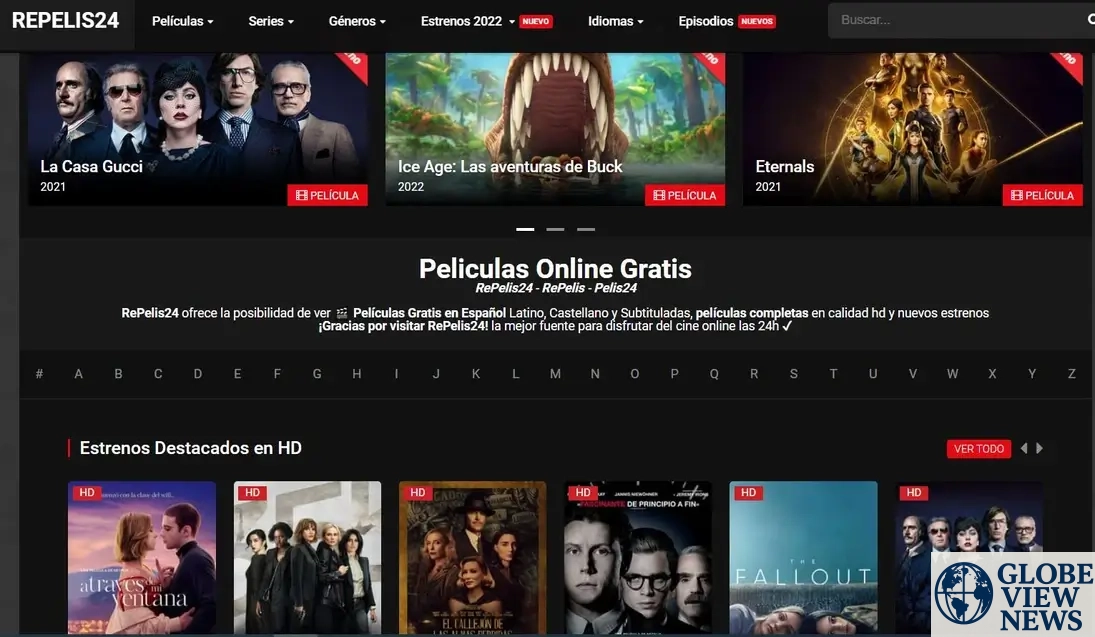In the dynamic world of online entertainment, repelis24 has emerged as a widely recognized name among global users seeking free access to Videos and television shows. Despite—or perhaps because of—its unofficial and legally gray status, repelis24 has garnered a massive user base that spans continents and languages. Its journey reflects the ongoing tug-of-war between accessibility and intellectual property, between content democratization and copyright enforcement.
The story of repelis24 is not merely about a streaming site; it’s a case study in digital consumption, user behavior, and the broader implications of how content is shared and controlled in the internet age. This article delves into the origins of repelis24, its structure, popularity, and the legal and ethical questions it raises, while placing it in the broader context of how we consume media today.
The appeal of repelis24 is rooted in one fundamental principle: access. At a time when streaming platforms are multiplying—each with its own exclusive content, subscription fee, and regional limitations—users are often faced with a fragmented and costly digital ecosystem. Services like Netflix, Disney+, Hulu, and HBO Max each require payment, and even then, not all content is globally available.
Enter repelis24, a platform that eliminates all those barriers. It offers a vast library of Videos and TV shows in multiple languages, often with subtitles, and accessible to anyone with a stable internet connection. This open access model has particularly attracted users from regions where official streaming services are either unaffordable or unavailable.
In addition, repelis24 boasts a user-friendly interface and fast load times. Unlike many of its competitors in the unofficial streaming world, it avoids excessive pop-ups and redirect traps—elements that usually frustrate users of such platforms. It also organizes content efficiently, with categories sorted by genre, release date, language, and popularity, making navigation seamless.
Technically, repelis24 doesn’t usually host the content itself but instead functions as an aggregator that connects users to third-party servers where the videos are stored. This model helps it evade certain forms of legal accountability, though it does not completely shield the platform from scrutiny.
The backend of the site is managed through a combination of automation and human curation. Algorithms scrape the internet for newly released titles and available streams, while administrators manage metadata, organize listings, and verify working links. This system allows repelis24 to offer up-to-date content often within hours or days of a video’s release, far faster than most legal platforms.
The platform also survives through ad revenue, affiliate marketing, and in some cases, donations. While some users might complain about the occasional ad, many tolerate it in exchange for free content. This “value-for-inconvenience” trade-off is one reason the platform continues to thrive.
The rise of repelis 24 has not gone unnoticed by intellectual property rights holders. Video studios, television networks, and copyright watchdogs have consistently attempted to shut down or block such platforms through legal means. Domains have been seized, URLs blacklisted, and hosting services pressured to drop them.
Still, repelis 24 adapts. Much like other resilient digital entities in the gray zone of legality, it often reemerges under new domain names or via mirror sites that replicate the content and structure of the original. This whack-a-mole strategy is common in the piracy world and highlights the limitations of traditional enforcement methods.
From an ethical standpoint, the debate is more nuanced. Supporters argue that repelis 24 democratizes access to culture and entertainment, especially in regions where media access is heavily restricted. They frame it as a form of digital resistance against monopolistic media conglomerates.
Opponents, however, stress that piracy undermines the creative ecosystem. Artists, producers, and developers rely on revenue generated from legal distribution channels to fund future projects. When users bypass official platforms, they disrupt this economic chain, potentially harming the very content creators they admire.
Though repelis 24 originated in the Spanish-speaking digital community, its influence has grown internationally. Many users from Latin America, Spain, and the United States utilize the platform not just for Spanish-language content, but also for Hollywood blockbusters and Asian cinema.
The model has inspired localized variants in other countries—sites that mimic repelis 24 in structure and function but cater to different linguistic or cultural audiences. This expansion underlines the universal appeal of free, unregulated access to entertainment, as well as the shared frustration with regional licensing restrictions.
As internet access improves globally and more people enter the digital content space, platforms like repelis 24 are likely to remain popular unless official services address the root causes of their appeal: affordability, accessibility, and comprehensive content libraries.
The popularity of repelis 24 is not solely due to content—it’s also about how it adapts to user expectations. The site’s design is mobile-responsive, and many users report watching content on smartphones and tablets. This mobile compatibility has proven crucial in markets where desktop usage is declining or where mobile data is more affordable.
Moreover, repelis 24 has embraced low-bandwidth modes, which allow users to stream in lower resolutions if their internet connection is unstable. This is a feature even some mainstream services have only recently adopted. Additionally, some versions of the site allow for limited download options, catering to users who prefer offline viewing.
User behavior on the platform also reflects broader trends in digital consumption. Binge-watching is common, and genre preferences skew toward action, horror, and thriller—content that benefits from high engagement. Reviews and star ratings on the site help guide viewer choices, creating a semi-curated experience in an otherwise decentralized space.
The repelis 24 phenomenon is a wake-up call for the legal streaming industry. It exposes the weaknesses in current business models that prioritize exclusivity and fragmentation over user convenience. Subscription fatigue is real; users are growing weary of managing multiple accounts and paying for a service only to find the specific title they want is on a different platform.
Streaming services could learn from repelis 24 in terms of UI simplicity, content organization, and responsiveness to user demands. While piracy cannot be endorsed, the behavior that drives users toward these platforms provides valuable insights into unmet needs in the market.
Some companies have started to respond. Platforms are exploring bundled services, localized pricing models, and even ad-supported free tiers to compete with unofficial alternatives. These shifts suggest a growing recognition that fighting piracy requires more than legal pressure—it demands evolution.
What lies ahead for repelis24? Its survival depends on both external pressures and internal resilience. If legal actions intensify or governments crack down more aggressively, its accessibility could be significantly hampered. But history has shown that platforms like repelis24 often find ways to resurface, supported by a digital infrastructure that thrives on decentralization and user solidarity.
The broader future of free digital access remains complex. On one hand, technological innovation and community-driven platforms promote inclusivity and cultural diffusion. On the other hand, sustainable content creation requires financial support—something free platforms inherently struggle to provide.
In the end, the enduring success of repelis24 reveals more about global user priorities than about the legality of the site itself. People want open access to stories, ideas, and entertainment—without hurdles, without borders, and without high costs. Whether the industry adapts to meet these demands or continues to battle the symptoms without addressing the cause remains to be seen.

